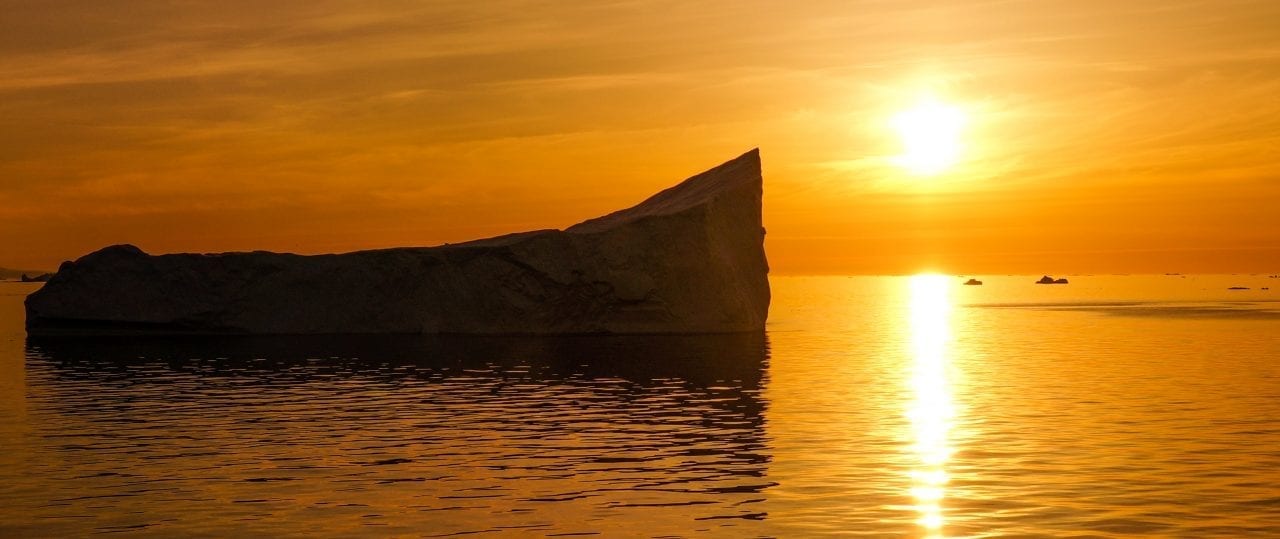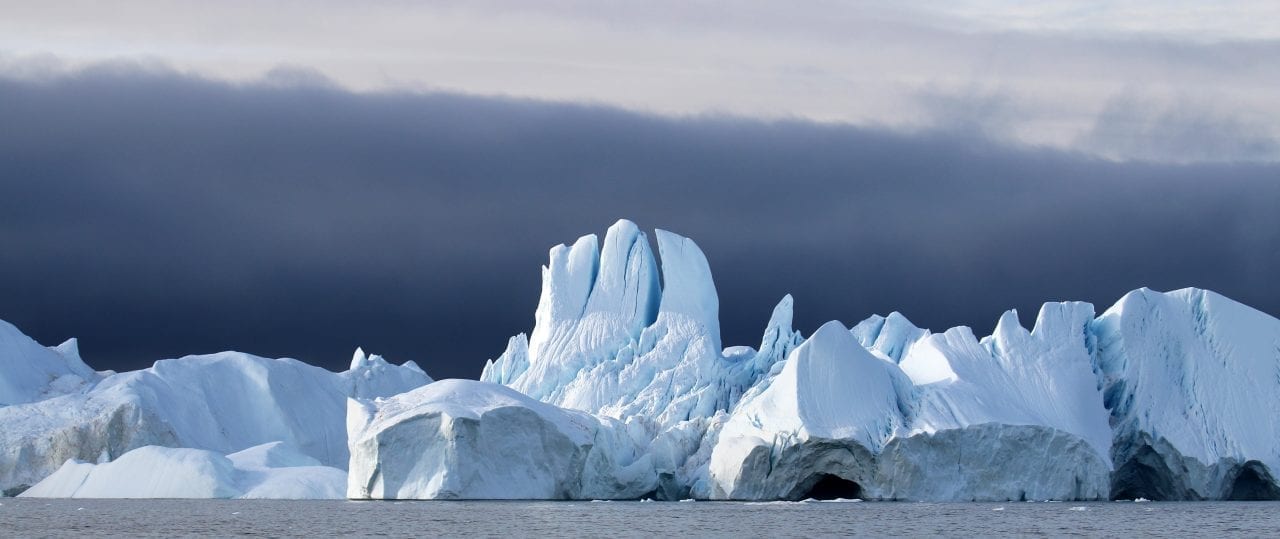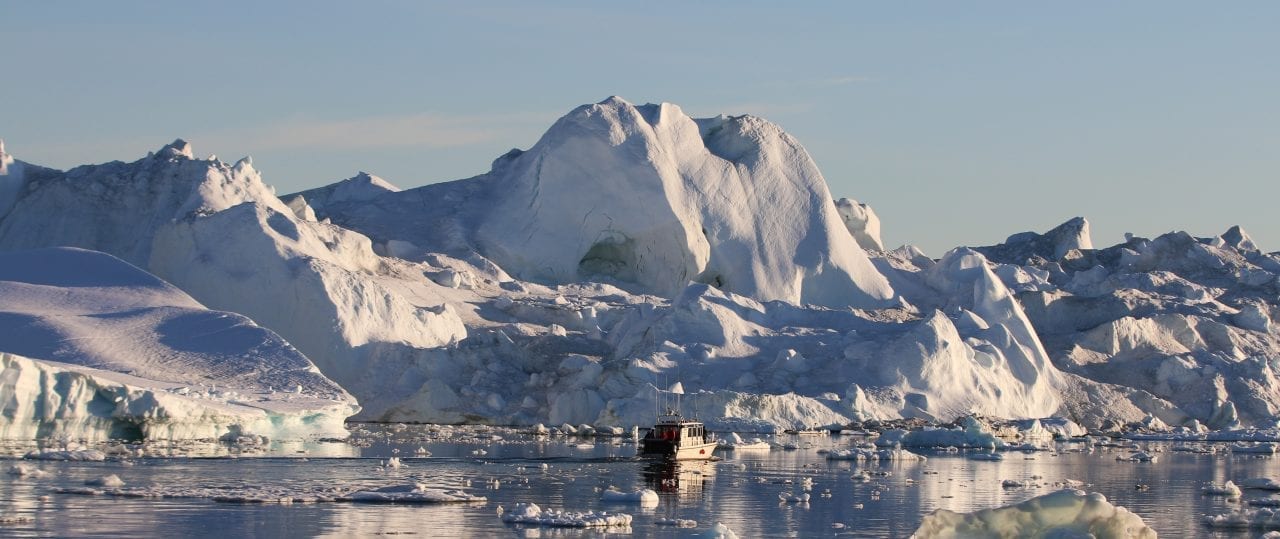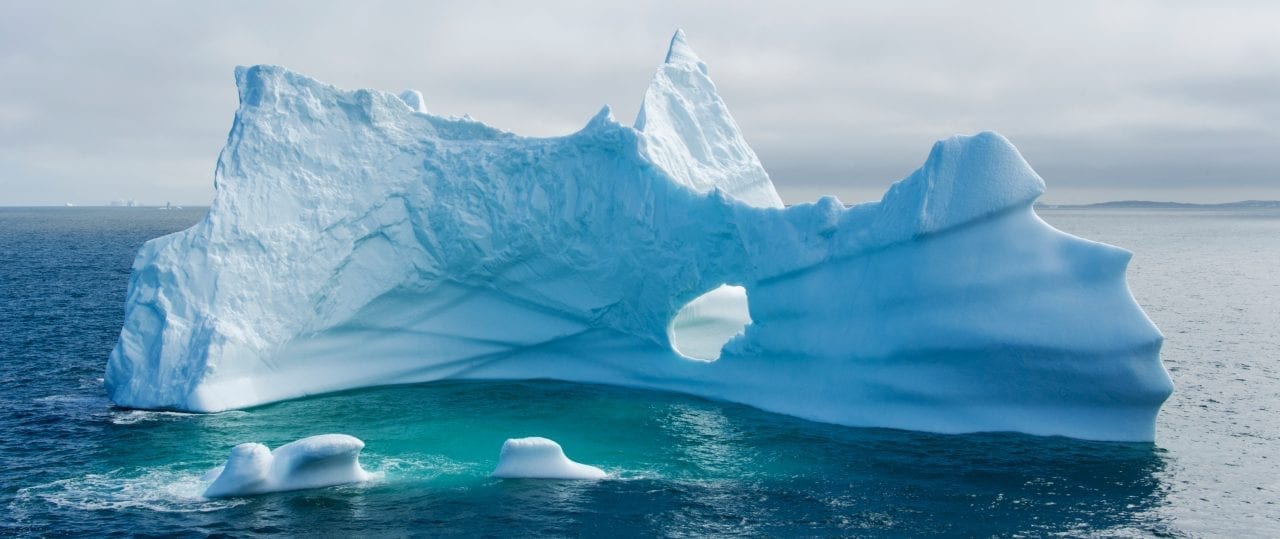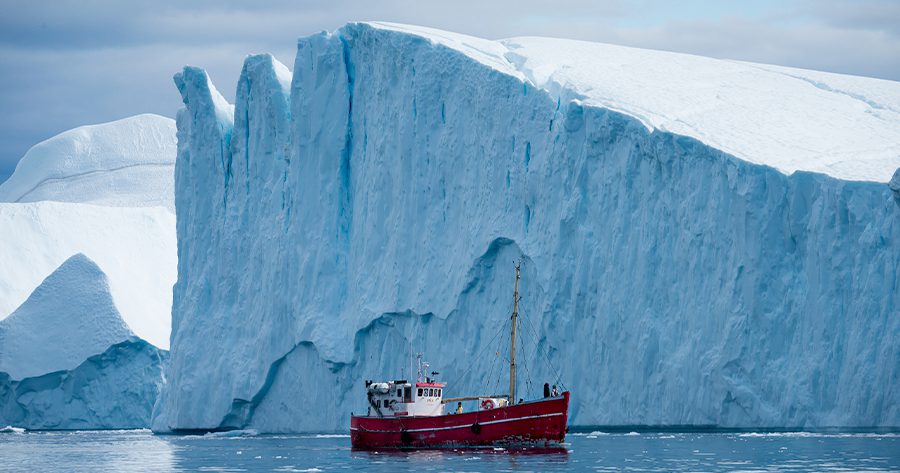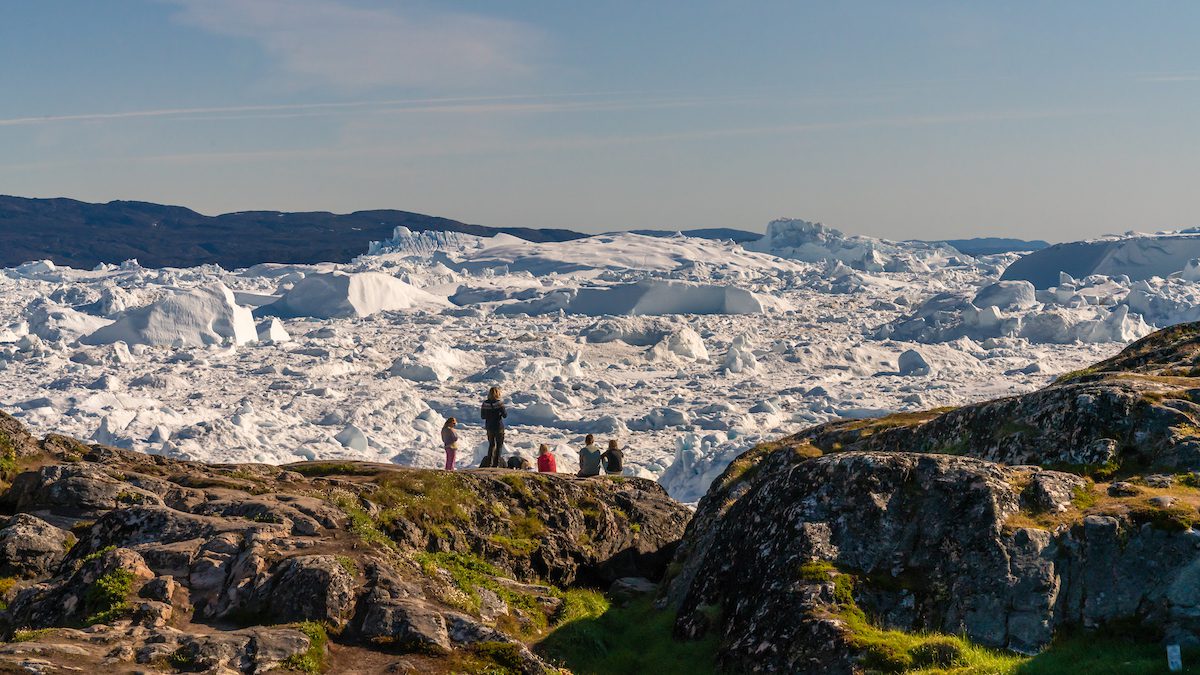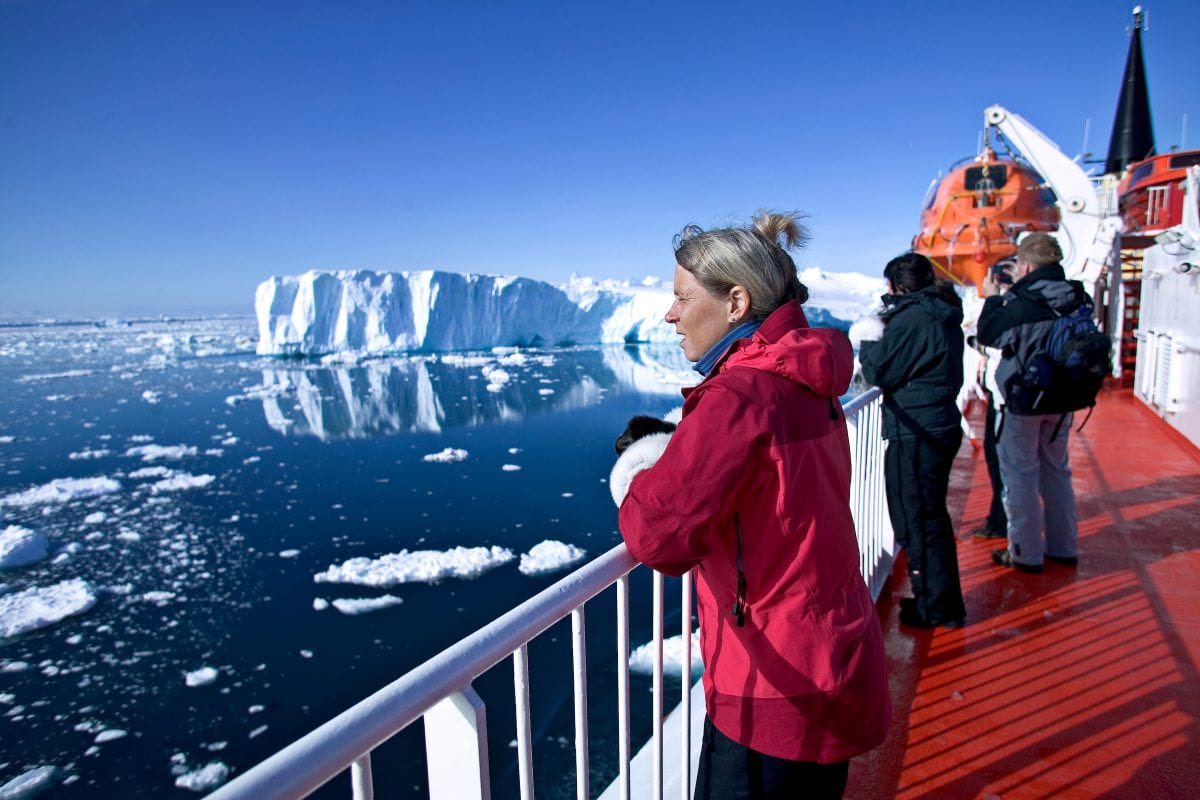The life-giver
The ice is not just dangerous; it can also be fascinating and even life-giving. Several places in Greenland have problems with obtaining drinking water, e.g., if the settlement is built on an island, and then you can melt the ice.
The ice also helps to create life more indirectly – namely when the freshwater ice floes and icebergs melt in the saltwater. The meltwater from the fresh ice creates rotations in the saltwater so that several minerals are swirled around and reach the surface where the algae can then exploit them to produce biomass. This creates optimal living conditions from shrimp and fish.
In many places on the Greenlandic east coast, so-called polynias are formed in the winter. These are areas in the ice that never freeze. At these polynias, seals, whales, and polar bears look for food.
The polynya off the coast of Ittoqqortoormiit creates good conditions for local hunters. Polar bears often come close to the town. In fact, it was this polynia that made people settle in the area.
The seals are enjoying the sun
In the spring, the seals lie on the ice to burn off fat when the sun is shining. This makes it a better diver when spring comes. The seals have a whole system of breathing holes. The seals help each other with keeping this system of breathing holes open. But when the seals come up to breathe at the breathing holes, it can be dangerous for the seal. Sometimes, a polar bear will be lying in wait.
Light, sound, taste – and whiskey
Throughout the day and sometimes night, the changing light makes the glow of the ice beautiful, and you want to see it again and again. Your sense of smell and hearing are also heightened in the clean, quiet air. And the sound, not to mention, the sound of thousands of tiny explosions when you fill a glass with ice that is hundreds of years old, mixed with a single malt whiskey. Listen to it and then drink it and let the heat spread in your body. It’s bliss!
Speaking of ice; strangely, the Greenlanders are large consumers of ice creams.
Read more:
7 fantastic facts about Greenlands icebergs
Experience the 5 types of icebergs
